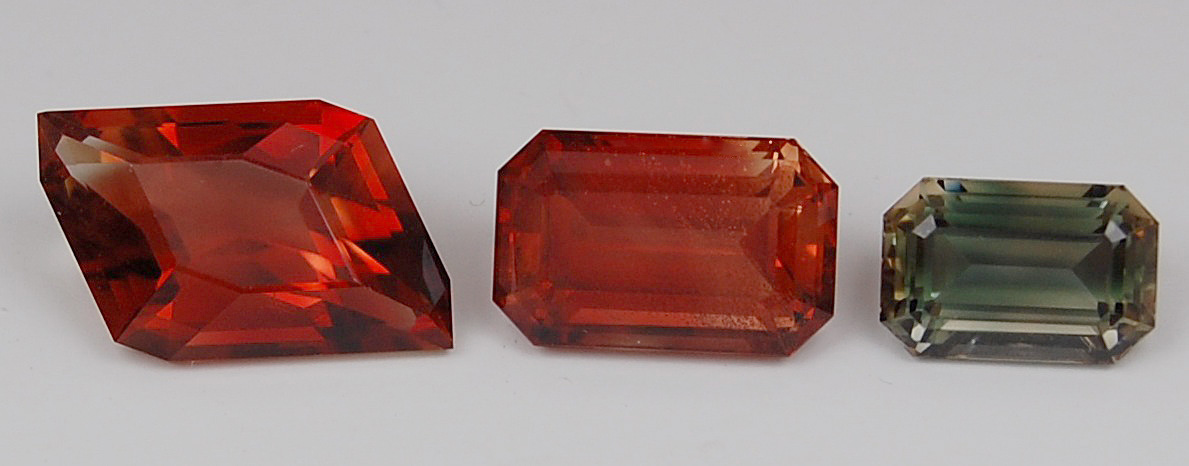
Introduction: Sunstone is a variety of the species labradorite (or sometimes oligoclase). Pictured above from left to right: 6.45 ct, 5.28 ct and 2.96 ct all from Plush, Oregon.
Colors: yellow, orange, red or green; sometimes more than one color is seen in zones within the same stone leading to interesting color patterns.
Clarity: There is no Type classification for sunstone. Some sunstones display a golden sheen from reflective inclusions of copper or hematite.
Stone Sizes: Some large sunstones have been faceted but most of the available gems are less than 10 carats.
Localities:
-Oregon: Several areas in the southeastern part of the state produce this rare variety of gem feldspar unlike any other locality.
-Tanzania, India
Treatment:
-None
Although Oregon sunstone is free from treatment, there was a diffusion treatment done on yellow labradorite/andesine that mimicked some of the rare red and green colors of Oregon sunstone. Thankfully, this material is no longer being sold regularly.
Gemology:
-Refractive Index: 1.559-1.568 (+/-0.005)
-Birefringence: 0.009
-Optic Character: Doubly refractive, biaxial positive
-Specific Gravity: 2.70 (+/-0.05)
-Hardness: 6-6.5
Toughness: poor
-Chemical Composition: (Na,Ca)Si3O8
-Cause of Color: Copper
-Absorption Spectra: Not diagnostic
-Fluorescence: Usually inert
-Cleavage: perfect and easy in two directions
-Phenomena: Aventurescence
Name: Sunstone is named after the bright glittery inclusions.
Dates: None
Care: The ultrasonic and steam cleaner should never be used. Warm, soapy water is safe.
To see available sunstones, click here.
